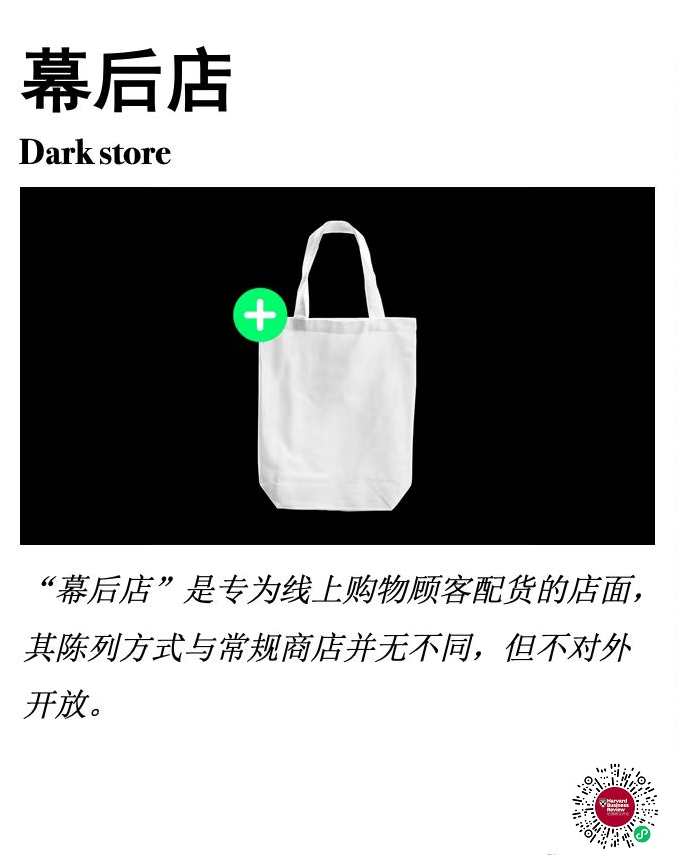
「释义」
“幕后店”是专为线上购物顾客配货的店面,其陈列方式与常规商店并无不同,但不对外开放。
在网购盛行的今天,越来越多的商家都希望能够参与其中,分得一杯羹。据说国外一些大超市都开始在各地开设专为网购顾客配货的分店。“幕后店”不对外营业,专门履行当日或次日送达的网上订单。每天在店里穿梭浏览商品的不是顾客,而是推着手推车为顾客配货的店员。这样的“幕后店”不设收银处,也没有任何促销宣传,不过为了方便员工搜寻货物,其陈列商品的方式与常规商店一致。
「应用场景」
我们使用安永的EY Embryonic平台之后也发现,几乎在一夜之间,电子商务策略的地位就改变了,这原本总是列在所有零售商三年计画里的最优先事项之一,现在成了度过全球疫情亟需的生命线。我们发现,零售商从2020年5月到7月,对电子商务的投资、收购与合作金额,约为一百亿美元。这些投资项目涵盖以实现最后一公里服务的物流能力、轻资产营运方式〔例如幽灵厨房(这种餐厅只有厨房设备,但没有内用区)〕与幕后商店(专门处理线上购物的零售物流配送中心),以及一些针对人工智能与区块链数字化功能的产品组合投资。
Using the EY Embryonic platform, we also saw, almost overnight, e-commerce strategies shift from a perpetual top priority on every retailer’s three-year plan to a desperately needed lifeline that could enable them to survive a global pandemic. We found that retailers made approximately $10 billion in e-commerce investments, acquisitions and partnerships from May to July 2020. These investments spanned logistics capabilities to enable last-mile, asset-light approaches like ghost kitchens (restaurants with a space for kitchen equipment and facilities, but no dining area for walk-in customers) and dark stores (retail distribution centers that cater exclusively to online shopping), as well as product portfolio investments geared toward digital capabilities in AI and blockchain.
对某些零售商来说,过去这一年加速先前已有的创新做法。但对许多其他零售商来说,这一年促使他们重新设定,原本对消费者需求及电子商务未来的想法。
For some retailers, this past year has accelerated previously existing efforts to innovate. But for many others, it has spurred a great reset of the way they think about consumers’ needs and the future of digital commerce.
以上文字选自 How E-Commerce Fits into Retail's Post-Pandemic Future 凯西·格拉姆林(Kathy Gramling)杰夫·奥尔谢尔(Jeff Orschel)约书亚·切尔诺夫(Joshua Chernoff)| 文 马冰仑 丨编辑




